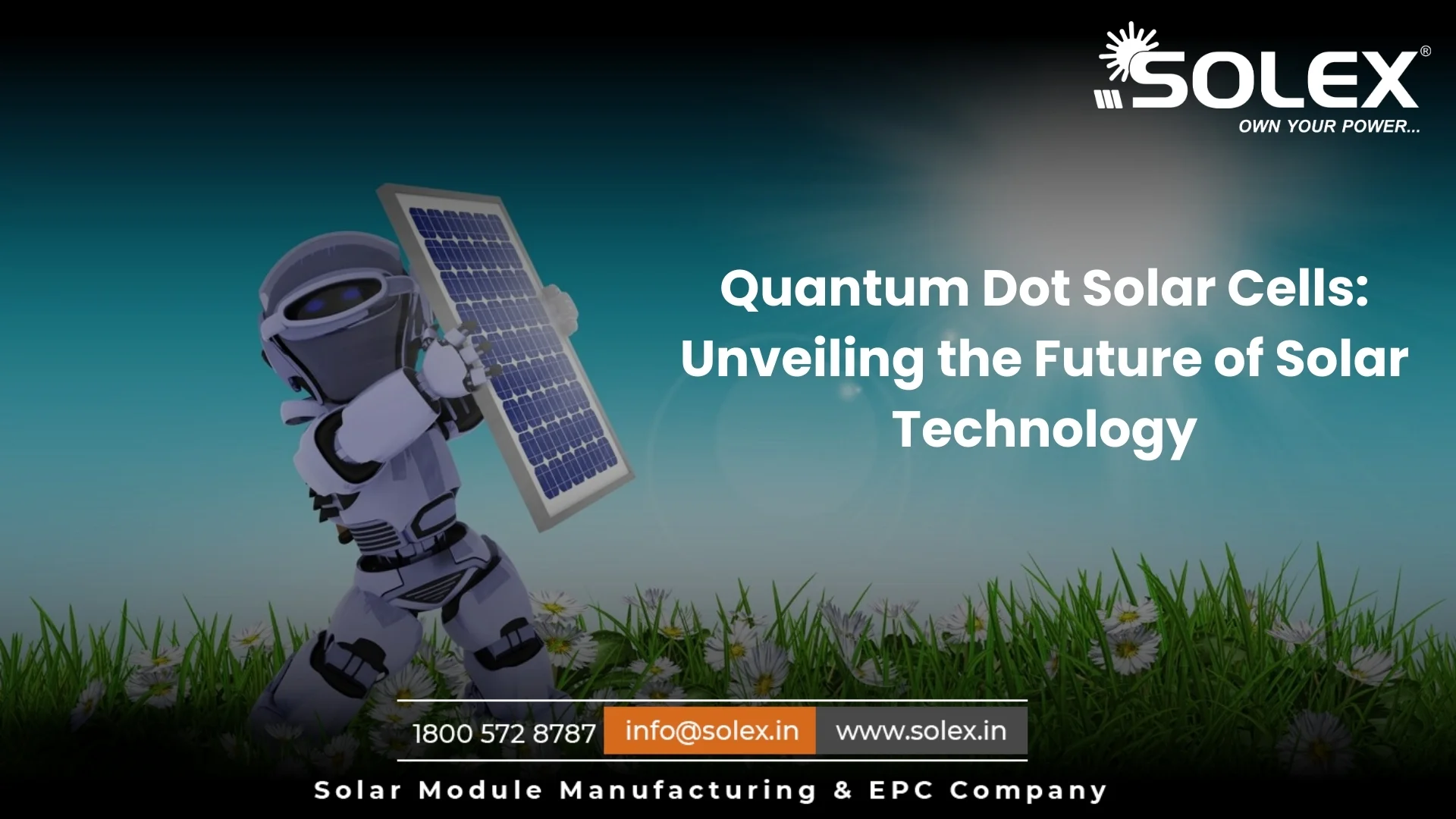In the realm of renewable energy, the quest for more efficient and sustainable solar technologies continues to drive innovation. Quantum Dot Solar Cells, a groundbreaking advancement in photovoltaics, have emerged as a promising avenue to revolutionize how we harness energy from the sun. In this article, we will explore the principles behind Quantum Dot Solar Cells, their unique characteristics, and their potential to shape the future of solar energy.
Understanding Quantum Dot Solar Cells:
Quantum Dot Solar Cells are a class of solar cells that leverage the fascinating properties of quantum dots to enhance light absorption and energy conversion. Quantum dots are nanoscale semiconductor particles, often composed of materials like lead sulfide or cadmium selenide. At this scale, the behavior of materials differs from their bulk counterparts, leading to unique optical and electronic properties.
In a Quantum Dot Solar Cell, these nanoscale quantum dots act as light-absorbing and charge-carrying entities. Unlike traditional solar cells that absorb light energy and convert it into electricity using a single semiconductor material, Quantum Dot Solar Cells use multiple layers of quantum dots with varying sizes. Each layer is designed to absorb different wavelengths of light, allowing for more efficient solar spectrum utilization.
Working Principles:
The key to the enhanced performance of Quantum Dot Solar Cells lies in their ability to generate multiple excitons from a single absorbed photon. Excitons are pairs of an electron and a positively charged hole created when a semiconductor material absorbs a photon. In traditional solar cells, a single exciton is generated per absorbed photon.
However, Quantum Dot Solar Cells go beyond this limitation by using quantum dots. Due to quantum confinement effects, these nanoscale particles exhibit discrete energy levels. When a photon with energy more significant than the bandgap of a quantum dot is absorbed, multiple excitons can be generated. This phenomenon, known as multiple exciton generation (MEG) or carrier multiplication, significantly enhances the efficiency of solar cells.
Critical Characteristics of Quantum Dot Solar Cells:
High Efficiency: Quantum Dot Solar Cells have the potential to achieve higher efficiency than traditional solar cells. The ability to generate multiple excitons from a single photon allows for better solar spectrum utilization, especially in the high-energy range.
Tunable Absorption: The size of quantum dots can be precisely engineered to absorb specific wavelengths of light. This tunability enables the customization of solar cells for optimal performance under different lighting conditions.
Solution Processability: Quantum dots can be synthesized and processed as solutions, offering a cost-effective and scalable method for manufacturing. This solution processability opens the door for large-scale Quantum Dot Solar Cells production.
Flexibility in Design: Quantum Dot Solar Cells provide flexibility in design by allowing the stacking of multiple layers with different bandgaps. This multi-layered approach optimizes light absorption across the solar spectrum.
Challenges and Considerations:
While Quantum Dot Solar Cells hold great promise, they also face challenges that need to be addressed for widespread adoption:
Toxicity Concerns: Quantum dots often contain heavy metals like cadmium, raising concerns about their environmental impact. Research is ongoing to develop non-toxic quantum dot materials that maintain the performance of solar cells.
Stability: Quantum dots can be sensitive to environmental factors, affecting their stability over time. Ensuring the long-term stability of Quantum Dot Solar Cells is a critical consideration for their practical application.
Scalability: While the solution processability of quantum dots offers scalability advantages, further research is needed to optimize manufacturing processes and reduce production costs.
Applications and Future Prospects:
Quantum Dot Solar Cells have the potential to reshape the solar energy landscape and find applications in various sectors:
Photovoltaic Windows: Transparent Quantum Dot Solar Cells could be integrated into windows, turning them into energy-generating surfaces without obstructing light and visibility.
Flexible and Lightweight Solar Panels: The solution processability of quantum dots allows for creating flexible and lightweight solar panels that can be integrated into unconventional surfaces.
Portable Electronics: Quantum Dot Solar Cells could power mobile electronic devices more efficiently, offering longer battery life and reducing the environmental impact of disposable batteries.
Space Exploration: The lightweight and high-efficiency characteristics make Quantum Dot Solar Cells suitable for space applications, where minimizing weight and maximizing energy production are crucial considerations.
Conclusion:
Quantum Dot Solar Cells stand at the forefront of a new era in solar technology, offering the potential to overcome some of the limitations of traditional solar cells. As research and development in this field continue progressing, addressing challenges and optimizing performance, Quantum Dot Solar Cells may become a mainstream solution for harnessing solar energy efficiently and sustainably. The journey toward a cleaner and more sustainable future is illuminated by the promise of Quantum Dot Solar Cells, unveiling a path to unprecedented advancements in solar technology.






